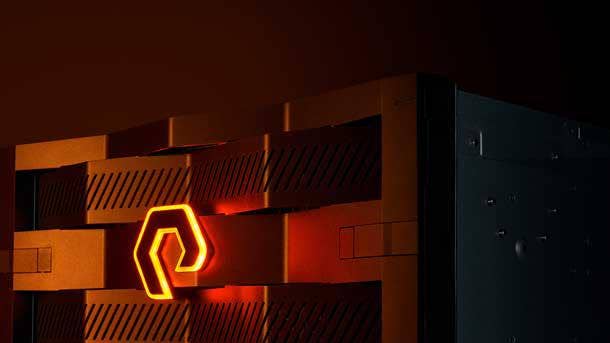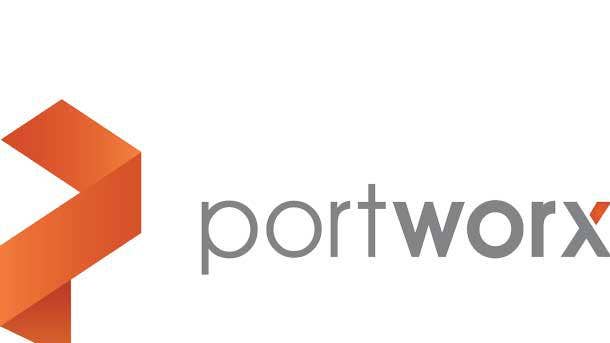Pure Storage CEO: No Stopping Evolution To Cloud, Flash
‘We really believe that giving our customers a cloud operating model, whether it’s an MSP or a large customer like a bank, to where they can operate their infrastructure and give their developers the cloud experience, even on on-prem infrastructure, is something that’s going to gain more and more momentum,’ says Pure Storage CEO Charles Giancarlo.

Towards A Better Cloud
Pure Storage this week unveiled its FlashArray//XL, the newest in its FlashArray block storage all-flash array line. But Pure Storage is not all about “flashy” storage hardware. Instead, the Mountain View, Calif.-based storage vendor is making its move to be a leading provider of cloud-friendly storage software and technologies as well as a top vendor partner to large cloud hyperscalers like Amazon Web Services, Microsoft Azure, and Google Cloud Platform.
Pure Storage CEO Charles Giancarlo, in a recent conversation with CRN, said the cloud is a part of everything his company does. For instance, given the enterprise-class performance of the new FlashArray//XL, Giancarlo said he expects that array to be the base on which large customers will build high-performance, scalable private cloud in their own on-premises infrastructures or in places like Equinix where they can get direct connect to the public cloud.
Giancarlo also said he expects Pure Storage hardware to become a bigger part of the cloud hyperscalers’ storage infrastructures. ’We by far have absolutely the best software for optimizing use of data on flash,“ he said. ”And I think this gives us a great opportunity to supply a number of the hyperscalers for their infrastructure. We can do it for less than they can.”
Giancarlo also talked with CRN about the importance of containers to the storage industry, and about what can be expected from Pure Storage in 2022. For a look behind the curtain, click through the slideshow.

Pure Storage Tuesday introduced its FlashArray//XL. How important is that to Pure Storage?
It’s very important. We’ve long been certainly a technology leader in what’s called tier-one storage for tier-one compute databases, remote desktop, and all of that. And we’ve gone into tier-zero environments, but not at large scale. This product now allows us to go into those large-scale, tier-zero environments with super high performance, and also getting to petabytes of information. So we feel really good about this new product.
What are some things that Pure Storage is looking at in terms of what's next for its FlashArray series?
Our [low-cost] FlashArray//C and [high-performance] FlashArray//X are actually the same product, just with different storage blades. Eventually we’ll unify that. FlashBlade is going to continue on its course with future generations, enabling both higher performance as well as more scale out, higher capacity capabilities. So from that standpoint, those products are going to continue to scale. Our Pure Fusion [SaaS management technology], which we announced in September, also allows FlashArray to scale because what Pure Fusion does is allow FlashArrays including our Cloud Block Store to be managed as a single global system. So it really allows for much broader use of the product, and allows organizations to really orchestrate their entire fleet of storage.
As you look at 2022, what are some other big focuses for Pure Storage?
I think what you’re going to see is Pure Fusion starting to take root. You’re going to see the next generation of FlashBlade come out. I think those are the big items that you’ll see, other than just continued work in building out all of the protocols that allow to go into more and more use cases.

If you look at the storage industry as a whole, what are some of the trends and changes that you're watching from an industry point of view?
A number of things. One is the continued evolution of customers thinking around hybrid infrastructures and what that needs, including where they’re going to choose to store and process their data, inclusive of [cloud] direct connects, for example, Equinix. And you saw this in our announcement with Azure on the computer-aided design capabilities that we’re providing where customers are choosing to retain their data on their owned equipment, in this case in Equinix, but with a direct connect into Azure for processing. The interesting thing there is that connection, that setup, provides superior performance compared to actually storing the data in the cloud itself. I think most people would imagine that if they stored the data in Azure and then used Azure compute, the performance would be higher. But no, as it turns out, that’s not what Azure data or AWS data is really set up to do. And so by storing data on, in this case, a FlashBlade system with a direct connect into Azure, they’re able to have superior performance and data sovereignty.
We’re also keeping an eye on data protection as it migrates, in many cases, to rapid recovery, which is an area that we’re very, very focused on. That’s been going very well for us. We really believe that giving our customers a cloud operating model, whether it’s an MSP or a large customer like a bank, to where they can operate their infrastructure and give their developers the cloud experience, even on on-prem infrastructure, is something that’s going to gain more and more momentum.

Does increased focus on the cloud eventually take away from some of the value of the hardware part of the storage industry? Are we going to see the hardware business decline eventually as the cloud grows?
Eventually, data has to land on hardware. It’s interesting. I was speaking to a number of people who are not in the business, not even in technology, about what Pure does. And as I was describing this, someone said, ’Well isn’t data stored up on a satellite somewhere in the cloud?’ And I said, ’No, eventually all data has to be stored on hardware. It’s actually gotta be somewhere and stored on something physical.’ We had our first major sale that we announced to one of the large hyperscalers.
And I think that the really exciting thing is that data is going to continue to go more and more towards flash than towards magnetic hard disk. As it does, we by far have absolutely the best software for optimizing use of data on flash. And I think this gives us a great opportunity to supply a number of the hyperscalers for their infrastructure. We can do it for less than they can. And we’ll save them power and cooling, we’ll save them floor space, we’ll reduce the amount of waste that they’re creating. These are really important things for their environmental footprint, but more important than anything else we’ll save them money.
I ask that question because the hyperscalers traditionally have either built their own hardware or acquired it from OEM developers on a white label basis. And very little of it has come from traditional storage vendors such as Pure Storage.
That’s true on the storage side. But if you look on the networking side, Arista has supplied most of them, with the exception of AWS. You have a highly specialized environment with software that’s not easily obtainable on the outside. And storage software has been around a long time. A lot of the hyperscalers have been able to develop their own through open source and their own development. But that was because hard disk had been around for 40 years, 50 years, and SSDs were designed to mimic hard disk. So you didn’t have to change your software to be able to utilize an SSD. But the hyperscalers really don’t provide a lot of flash storage, and what they do provide is extraordinarily expensive. If they really want to be able to start replacing their lower cost storage, which today is on hard disk, with flash, they’ll have to develop what we’ve developed over the last eight years in terms of really efficient use of flash storage. Now some of them may want to do that on their own. But others, just like them deciding to use Arisa rather than developing their own networking software, I think some of them may want to utilize someone like us.

So how does that impact your channel then going forward given that Pure Storage has traditionally been 100-percent channel-focused.
I think it does set up potentially some channel challenges. But at the same time, a lot of these hyperscalers actually use a channel. Now it’s all heavily discounted, but they’ll use a channel to set up their racks. I mean, a lot of them use a third-party for staging, a company like WWT (World Wide Technology) because they don’t want to do the staging themselves. Microsoft uses staging. So do a lot of large SaaS companies.
Anything else we need to know about what Pure Storage is doing for 2022?
Well, continued hyperscale for Portworx. Portworx has been doing extraordinarily well for us, which is all about the ongoing transition in terms of new software development towards containers. It’s been very exciting. And in fact most of our work in the cloud now, what we do in the cloud, is all container-based.

You mention Pure Storage and Portworx. in addition to Pure Storage acquiring Portworx, we recently saw Veeam acquire storage container developer Kasten, and last month DataCore acquired storage container developer MayaData. What's the big interest in containers from the storage vendor side?
Well, it’s just different. The way that containers use storage is quite different. And in particular, let’s go back to VMs (virtual machines). When you think about VMs, there might be a change in where a workload sits maybe once a week when the customer uses [VMware] vMotion or vCenter to coordinate where to place the VM and so forth. Containers can move around multiple times a second. Now most storage systems are designed for high speed data, but not for high-speed transitions of connections, if you will, to fixed data environments. And so the storage systems for that reason alone, but for other reasons as well, need to be modified to really be able to keep up with just how fluid containers are. So it makes a big difference.
What was the big takeaway from Pure Storage's recently reported third fiscal quarter 2022?
The big takeaway was that everything went well. I mean, literally everything went well. It was very balanced across the quarter, with 37 percent [revenue] growth year-over-year. And no matter how you cut it, even if you compare to two years ago, it was really good growth. All of our products, both old and new, grew extraordinarily well during the quarter. We grew across all the geographies. So really just a top notch quarter. When people asked us to point something out that went particularly well, the fact was that everything went well.